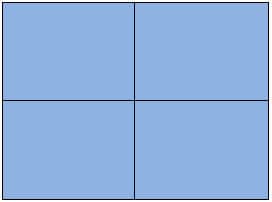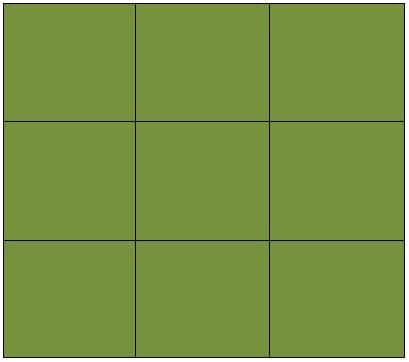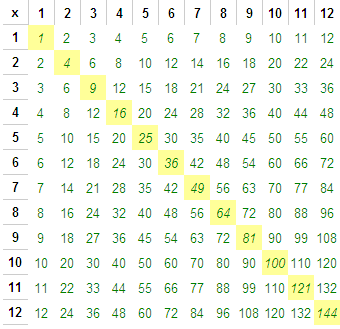A square number is the number we get after multiplying an integer (not a fraction) by itself. For example:
1 x 1 = 1
One is the square number.
2 x 2 = 4
Four is the square number of multiplying two by two.
3 x 3 = 9
Nine is the square number of three times three.
Why do we call it a Square Number?
This is best illustrated in a diagram. Let’s take 2 x 2:

If we’re multiplying 2 by 2, that means we have two groups of two items. As you can see we have a grid measuring two items vertically and two items horizontally. These items when arranged, make a square.
Adding another row and column of items, gets us a new perfect square:

We now have a square of three items vertically and three items horizontally: 3 x 3 = 9.
Finding Square Numbers
Now you have the tools to find every square number. Multiply an integer by itself, results in a square number. Let’s continue:
4 x 4 = 16
5 x 5 = 25
6 x 6 = 36
7 x 7 = 49
8 x 8 = 64
Make a Game of It
Do you have a box of crackers at home? How about some of those yummy square cheese-flavoured ones? Grab the box and put a bunch in a pile on your kitchen table. Then start arranging them into squares. Start with 1 x 1, then onto 2 x 2. At every square, count the rows and columns and how many crackers are in each square and write down the numbers. For example, 3 x 3 = 9.
Keep adding rows and columns to see how large you can make your square.
Square Numbers in the Multiplication Table
Understanding the square numbers will also help you start making sense of the multiplication table.

As you can see, the square numbers make up the diagonal line across the multiplication table, where the integers multiplied by themselves intersect.

